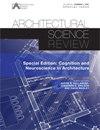在自然通风的大学教室中监测二氧化碳浓度以控制空气传播引起的感染概率
IF 1.8
3区 艺术学
0 ARCHITECTURE
引用次数: 10
摘要
由于人们在室内的时间越来越多,确保充分通风的必要性已成为当务之急。新冠肺炎的确诊空气传播突出了考虑通风对降低感染风险的影响的必要性。在自然通风的建筑中,通风率不容易确定,也很难估计实施预防措施的风险。本文提出了一种通过CO2浓度监测来估计感染概率的方法,并将其应用于大学课堂。还调查了人们的活动、课堂特征、占用率和防护口罩的影响。根据该方法,可以使用CO2数据记录器来计算感染概率,这些数据记录器可以用作“警报”系统,以将感染概率保持在临界值以下。这种方法将改善室内的健康条件,并降低未来感染传染病的风险。本文章由计算机程序翻译,如有差异,请以英文原文为准。
Monitoring CO2 concentration to control the infection probability due to airborne transmission in naturally ventilated university classrooms
Due to the increasing amount of time that people are spending indoors, the need to ensure adequate ventilation has become a priority. The confirmed airborne transmission of COVID-19 highlights the necessity to consider the effect of ventilation on the reduction of the infection risk. In naturally ventilated buildings, the ventilation rate is not easy to determine, and it is difficult to estimate the risk to implement preventive measures. This paper presents a method to estimate the infection probability from CO2 concentration monitoring, which was applied to university classrooms. The effects of people’s activity, classroom characteristics, occupancy and protective masks were also investigated. From the method, it is possible to calculate the infection probability using CO2 dataloggers that can be adopted as ‘alarm’ systems to keep the infection probability below a critical value. The method will enhance healthy conditions indoors and reduce the risk of infectious diseases in the future.
求助全文
通过发布文献求助,成功后即可免费获取论文全文。
去求助
来源期刊

Architectural Science Review
ARCHITECTURE-
CiteScore
4.80
自引率
8.70%
发文量
34
期刊介绍:
Founded at the University of Sydney in 1958 by Professor Henry Cowan to promote continued professional development, Architectural Science Review presents a balanced collection of papers on a wide range of topics. From its first issue over 50 years ago the journal documents the profession’s interest in environmental issues, covering topics such as thermal comfort, lighting, and sustainable architecture, contributing to this extensive field of knowledge by seeking papers from a broad geographical area. The journal is supported by an international editorial advisory board of the leading international academics and its reputation has increased globally with individual and institutional subscribers and contributors from around the world. As a result, Architectural Science Review continues to be recognised as not only one of the first, but the leading journal devoted to architectural science, technology and the built environment. Architectural Science Review publishes original research papers, shorter research notes, and abstracts of PhD dissertations and theses in all areas of architectural science including: -building science and technology -environmental sustainability -structures and materials -audio and acoustics -illumination -thermal systems -building physics -building services -building climatology -building economics -ergonomics -history and theory of architectural science -the social sciences of architecture
 求助内容:
求助内容: 应助结果提醒方式:
应助结果提醒方式:


